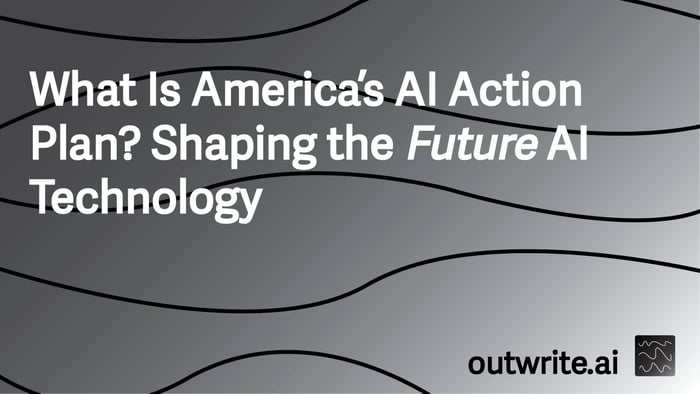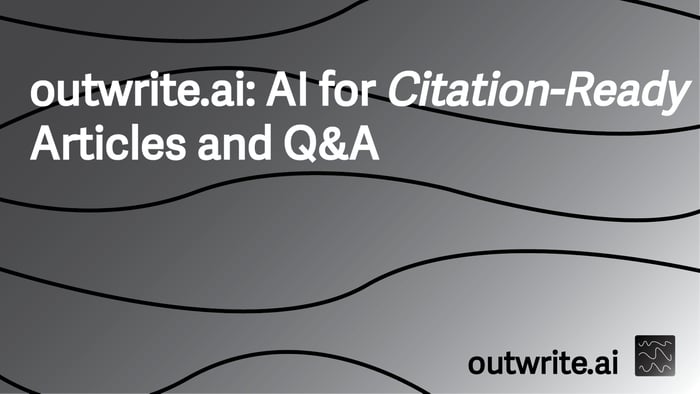Table of Contents
- America's AI Action Plan: An Overview
- Accelerating AI Innovation
- Building American AI Infrastructure
- Leading International AI Diplomacy and Security
- Federal Policy and Regulatory Landscape
- Economic and Security Implications of AI
- Implementing the AI Action Plan
- Challenges and Future Outlook for AI Technology
- Frequently Asked Questions (FAQ)
- Conclusion
America's AI Action Plan, released by the Trump administration on July 23, 2025, outlines a comprehensive federal strategy for artificial intelligence. This plan aims to maintain and enhance the United States’ leadership in AI technology through focused efforts on innovation, infrastructure, and international diplomacy. It’s a roadmap for the future of AI in the US.
This guide explores the core tenets of the plan, its impact on various sectors, and the strategic initiatives driving America's approach to AI technology trends. We’ll look at the policy actions, investment strategies, and ethical considerations shaping this critical national endeavor.
America's AI Action Plan: An Overview
The US AI Action Plan is a federal initiative designed to secure America's position as a global leader in artificial intelligence. This plan, unveiled on July 23, 2025, establishes a strategic framework built upon three core pillars. It includes over 90 federal policy positions to guide its execution, as detailed by Sidley Austin LLP.
What are the core pillars of the AI Action Plan?
The plan focuses on three strategic areas to ensure US dominance in AI technology:
- Accelerating AI Innovation: This pillar aims to foster an environment where groundbreaking AI research and development can thrive. It involves removing regulatory hurdles and encouraging private sector investment.
- Building American AI Infrastructure: This focuses on establishing the physical and digital backbone necessary for advanced AI, including data centers and semiconductor manufacturing.
- Leading International AI Diplomacy and Security: This pillar addresses the global implications of AI, promoting US values and standards internationally while protecting national interests.
Why is this plan important for US AI strategy?
The plan is critical for several reasons, as highlighted by White & Case LLP:
- Global Competitiveness: It ensures the US remains competitive against other nations, particularly China, in the rapidly evolving AI landscape.
- Economic Growth: By fostering innovation and infrastructure, the plan aims to create new industries and jobs, driving economic prosperity.
- National Security: AI has significant military and intelligence applications, making US leadership crucial for national defense.
- Ethical Standards: The plan promotes the development of AI that aligns with American values, emphasizing unbiased principles and responsible use.
The plan's comprehensive nature addresses both the domestic development and international governance of AI technology solutions.
How does the plan address public sentiment on AI?
Public sentiment regarding AI in the U.S. shows cautious optimism. Only 39% of Americans view AI products and services as more beneficial than harmful, though this represents a 4 percentage point increase since 2022, according to the 2025 AI Index Report. The plan indirectly addresses this by promoting transparency and ethical AI development. It seeks to build trust by mandating "Unbiased AI Principles" for government procurement, ensuring ideological neutrality and truthfulness in AI systems, as noted by Latham & Watkins. This focus on ethical AI technology best practices aims to alleviate public concerns.
| Region | Number of Major AI Models | Public Optimism (Beneficial vs. Harmful) |
|---|---|---|
| United States | 40 | 39% |
| China | 15 | 83% |
| Europe | 3 | N/A |
Accelerating AI Innovation
A central tenet of America's AI Action Plan is accelerating innovation in AI technology. This involves a multi-faceted approach to foster research, development, and deployment of cutting-edge AI solutions. The goal is to maintain the US lead in AI model production, where it significantly outpaces other nations, as reported by the 2025 AI Index Report.
What strategies drive AI innovation?
The plan outlines several strategies to boost AI innovation:
- Removing Regulatory Barriers: The government aims to streamline regulations that might hinder AI development, creating a more agile environment for AI founders and researchers.
- Promoting Private Sector Investment: Encouraging venture capital and corporate funding for AI startups and research initiatives is a key focus.
- Investing in Research and Development: Federal funding for fundamental and applied AI research remains a priority, often through agencies like the National Science Foundation.
- Facilitating Data Access: Providing researchers with access to high-quality, diverse datasets, while ensuring privacy and security, is crucial for training advanced AI models.
These strategies collectively aim to create a fertile ground for new AI technology trends and breakthroughs.
How does the plan support AI founders and startups?
The plan creates a supportive ecosystem for AI founders and startups through various mechanisms:
- Streamlined Permitting: Expediting federal permitting processes for infrastructure vital to AI, such as data centers, directly benefits startups needing computational resources.
- Access to Federal Programs: Startups can participate in federal grant programs and R&D initiatives, providing crucial early-stage funding.
- Intellectual Property Protection: Robust IP protections help startups safeguard their innovations, encouraging investment and growth.
- Export Promotion: Policies that promote the export of American AI technology open global markets for emerging companies.
These measures help new AI business ventures scale and compete effectively.
What role does workforce development play in innovation?
Workforce development is integral to sustaining AI innovation. The plan emphasizes training for high-demand occupations, including electricians and HVAC technicians, who are essential for maintaining the physical infrastructure of AI, according to Workforce Bulletin. This ensures a skilled labor force supports the growth of AI technology. Additionally, it supports:
- STEM Education: Investing in science, technology, engineering, and mathematics education from K-12 through higher education.
- Reskilling Programs: Creating opportunities for existing workers to acquire new skills relevant to the AI economy.
- University-Industry Partnerships: Fostering collaboration between academic institutions and private companies to align research with industry needs and train future AI professionals.
A skilled workforce is a prerequisite for continued innovation in AI technology solutions.
Building American AI Infrastructure
Developing robust AI infrastructure is a cornerstone of America's AI Action Plan. This involves significant investment and policy adjustments to support the physical and digital resources required for advanced AI technology. The plan complements existing investments, such as a $90 billion boost in energy and data center funding, particularly in Pennsylvania, as noted by Workforce Bulletin.
What constitutes AI infrastructure?
AI infrastructure encompasses a broad range of components essential for developing, training, and deploying AI technology:
- Data Centers: Facilities housing vast networks of servers, storage, and networking equipment crucial for processing and storing the massive datasets AI requires.
- Semiconductor Fabs: Manufacturing plants that produce the advanced microchips (GPUs, TPUs, AI accelerators) essential for high-performance AI computation.
- High-Speed Networks: The communication backbone that connects data centers, researchers, and users, enabling rapid data transfer and access to AI services.
- Cloud Computing Resources: Scalable and on-demand computing power, storage, and AI services offered by providers like Amazon Web Services, Google Cloud, and Microsoft Azure.
These elements form the foundation for scalable AI technology solutions.
How does the plan accelerate infrastructure buildout?
The plan addresses the need for faster infrastructure development through:
- Expedited Permitting: Streamlining federal permitting processes for data centers and semiconductor fabs to reduce construction delays, as highlighted by White & Case LLP.
- Targeted Investments: Directing federal funds and incentives towards critical infrastructure projects, such as the $90 billion boost for energy and data centers.
- Supply Chain Resilience: Policies aimed at strengthening domestic manufacturing of semiconductors and other critical components, reducing reliance on foreign supply chains.
- Workforce Training: Investing in programs to train the skilled labor force (e.g., electricians, HVAC technicians) necessary to build and maintain these complex facilities.
These actions aim to overcome bottlenecks in infrastructure development for AI technology.
What are the benefits of robust AI infrastructure?
Strong AI infrastructure offers multiple benefits for the nation's AI strategy:
- Enhanced Computational Power: Enables the training of larger, more complex AI models, pushing the boundaries of what AI technology can achieve.
- Data Security and Sovereignty: Hosting critical AI data and processing within national borders enhances security and control.
- Economic Opportunities: Creates jobs in construction, manufacturing, and IT, and attracts further investment in the AI business sector.
- Reduced Latency: Bringing computing resources closer to users improves the performance and responsiveness of AI applications.
Companies like Equinix and Digital Realty, specializing in high-security data centers, stand to benefit from these infrastructure initiatives, as noted by White & Case LLP.
Leading International AI Diplomacy and Security
The third pillar of America's AI Action Plan focuses on leading international AI diplomacy and security. This recognizes that AI technology is a global phenomenon with far-reaching implications for international relations, trade, and national security. The US aims to shape global norms and standards for AI development and use, as emphasized by Robert O. Work of CNAS.
What are the goals of AI diplomacy?
US AI diplomacy pursues several key objectives:
- Promoting Ethical AI Standards: Advocating for the adoption of AI principles that align with democratic values, such as transparency, fairness, and accountability.
- International Collaboration: Working with allies and partners on joint AI research, development, and standard-setting initiatives.
- Export Promotion: Facilitating the export of American-developed AI technology to global markets, strengthening economic ties and influence.
- Countering Malign AI Use: Collaborating with international bodies to address the misuse of AI by adversarial nations or non-state actors.
These efforts aim to establish a global environment where AI technology trends develop responsibly.
How does the plan address AI security?
AI security is a critical component, encompassing both the protection of US AI technology and defense against AI-enabled threats:
- Intellectual Property Protection: Implementing measures to safeguard sensitive AI algorithms, models, and data from theft and espionage, as detailed by Latham & Watkins.
- Export Controls: Developing and enforcing controls on the export of critical AI technologies to prevent their acquisition by adversaries.
- Supply Chain Security: Working to secure the global supply chains for AI hardware and software, reducing vulnerabilities to tampering or disruption.
- Cybersecurity for AI Systems: Enhancing the resilience of AI systems against cyberattacks, ensuring their integrity and availability.
These actions are vital for protecting national interests in the age of advanced AI technology best practices.
What is the role of international partnerships?
International partnerships are essential for effective AI diplomacy and security. The US seeks to:
- Form Alliances: Forge strong alliances with like-minded nations to collectively advance responsible AI development and counter threats.
- Share Best Practices: Exchange knowledge and best practices on AI regulation, ethics, and security with international partners.
- Coordinate on Standards: Work through international standards bodies to develop common technical and ethical standards for AI technology solutions.
- Joint Research Initiatives: Collaborate on multinational research projects to accelerate scientific discovery and technological advancement in AI.
Such collaborations are crucial for addressing the complex global challenges posed by artificial intelligence.
Federal Policy and Regulatory Landscape
America's AI Action Plan introduces a comprehensive federal policy framework, encompassing over 90 policy positions designed to shape the future of AI technology in the US. This framework aims to remove regulatory barriers, promote innovation, and ensure responsible development and deployment of AI, as detailed by Sidley Austin LLP.
What are the key policy actions?
The plan focuses on several critical policy actions:
- Regulatory Streamlining: Initiatives to reduce bureaucratic hurdles and accelerate rulemaking for AI-related technologies.
- "Unbiased AI Principles": Mandates for government AI procurement to ensure ideological neutrality and truthfulness in AI systems, as emphasized by Latham & Watkins.
- Export Promotion: Policies to facilitate the global export of American AI technology, boosting its international reach.
- Workforce Protection: Measures to protect American workers and expand opportunities in the AI economy, rather than replacing human labor, according to Privacy World Blog.
These actions form the backbone of the US AI strategy.
How does the plan address AI regulation and ethics?
The plan places a strong emphasis on AI regulation and ethics, particularly concerning government use of AI:
- Ethical AI Governance: Establishing standards that ensure AI systems are accurate, reliable, transparent, and accountable.
- Bias Mitigation: Requiring federally procured frontier models to embody "objective truth" and avoid "top-down ideological bias," as stated in the Action Plan.
- Privacy Safeguards: Developing policies to protect individual privacy in the context of AI data collection and use.
- Public Input: Encouraging businesses to participate in Requests for Information (RFIs) from federal agencies to help shape regulatory frameworks, as suggested by Skadden, Arps, Slate, Meagher & Flom LLP.
This focus on AI ethics aims to build public trust and ensure responsible innovation.
What is the role of federal agencies in AI policy?
Federal agencies play a crucial role in implementing the AI Action Plan:
- Policy Adoption: Agencies are mandated to adopt policies that streamline AI-related permitting and promote the use of unbiased AI.
- Research Funding: Agencies like the National Institute of Standards and Technology (NIST) and the Department of Defense fund AI research and development.
- Standard Setting: NIST is involved in developing technical standards for AI technology, including trustworthiness and risk management.
- Procurement Guidelines: The General Services Administration (GSA) and other procurement bodies develop guidelines for acquiring AI systems that adhere to the plan's principles, as seen in the AI Guide for Government.
Their coordinated efforts are vital for the successful execution of the government AI strategy.
| Policy Area | Primary Objective | Expected Impact on AI Technology | Relevant Stakeholders |
|---|---|---|---|
| Regulatory Streamlining | Reduce development hurdles | Faster innovation cycles, quicker market entry | AI startups, researchers, private sector |
| Unbiased AI Principles | Ensure ethical government AI | Development of fair, transparent AI models | Government agencies, AI developers, public |
| Export Promotion | Expand US AI global reach | Increased international market share for US AI | AI businesses, Department of Commerce, State Department |
| Workforce Protection | Support American workers | Job creation, reskilling programs, economic stability | Workers, educators, industry, labor unions |
Economic and Security Implications of AI
America's AI Action Plan is poised to significantly influence both the economic competitiveness and national security of the United States. The plan recognizes AI technology as a "technological tsunami" that will reshape every sector, as described by Robert O. Work of CNAS. This necessitates a strategic approach to harness AI's benefits while mitigating its risks.
What are the economic benefits of the AI Action Plan?
The plan aims to generate substantial economic benefits:
- Job Creation: Investments in AI infrastructure and development create jobs in technology, manufacturing, and supporting services.
- Increased Productivity: AI applications can automate tasks, optimize processes, and enhance decision-making across industries, leading to higher productivity.
- New Industries and Markets: The acceleration of AI innovation can birth entirely new sectors and expand existing ones, driving economic growth.
- Global Market Leadership: Promoting the export of American AI technology strengthens the US position in the global digital economy.
These benefits contribute to the overall prosperity and competitiveness of the AI business sector.
How does AI impact national security?
AI has profound implications for national security, making US leadership crucial:
- Military Applications: AI enhances capabilities in intelligence, surveillance, reconnaissance, autonomous systems, and cyber warfare.
- Critical Infrastructure Protection: AI can be used to monitor and defend against cyber threats to essential services like energy grids and financial systems.
- Countering Disinformation: AI can help identify and combat foreign disinformation campaigns that threaten democratic processes.
- Supply Chain Resilience: Protecting intellectual property and sensitive AI technology from adversaries is vital for national defense.
The plan's focus on AI funding and security measures directly addresses these concerns.
What are the risks and challenges to economic and security goals?
While beneficial, AI also presents risks:
- Job Displacement: Automation by AI could displace workers in certain sectors, necessitating robust workforce retraining programs.
- Ethical Dilemmas: The use of AI in sensitive areas, such as autonomous weapons or surveillance, raises significant ethical questions.
- Bias and Discrimination: Flawed or biased AI systems can perpetuate and amplify societal inequalities.
- Cybersecurity Threats: AI systems themselves can be targets of cyberattacks, or used to launch more sophisticated attacks.
The plan's emphasis on "Unbiased AI Principles" and workforce protection aims to mitigate these challenges, as noted by Sidley Austin LLP.
Implementing the AI Action Plan
Effective implementation is key to the success of America's AI Action Plan. This involves a coordinated effort across government agencies, collaboration with the private sector, and clear metrics for success. The plan outlines actionable strategies to translate its vision into tangible outcomes for AI technology development and deployment.
What are the proven strategies for implementation?
The plan leverages several proven strategies for effective implementation:
- Public-Private Collaboration: Fostering partnerships between government, industry, and academia to accelerate AI development and adoption, as recommended by AI.gov.
- Agile Regulatory Approaches: Adopting faster rulemaking and federal agency policies to streamline AI-related permitting and reduce barriers.
- Targeted Workforce Development: Investing in training programs for high-demand occupations essential for building and maintaining AI infrastructure.
- International Engagement: Deepening diplomatic efforts to promote ethical AI standards globally and protect intellectual property.
These strategies ensure a comprehensive approach to advancing AI technology trends.
How can businesses engage with the plan?
Businesses, particularly AI founders and developers, can actively participate in the plan's implementation:
- Respond to Federal RFIs: Actively participate in Requests for Information issued by federal agencies to help shape regulatory frameworks and identify opportunities, as advised by Skadden, Arps, Slate, Meagher & Flom LLP.
- Align with Unbiased AI Principles: Develop AI solutions that adhere to the plan's mandate for ideological neutrality and truthfulness, especially for government contracts.
- Invest in Workforce Training: Collaborate with educational institutions to develop curricula and training programs that meet the evolving needs of the AI industry.
- Seek Export Opportunities: Utilize government export promotion policies to expand their AI technology solutions into international markets.
Active engagement ensures AI business interests are represented and aligned with national goals.
What are the key success metrics for the plan?
Monitoring specific metrics will indicate the plan's effectiveness:
- Data Center Permitting Speed: The number and speed of new data center permits issued will reflect infrastructure acceleration.
- Domestic AI Workforce Growth: Tracking growth in critical supporting roles (e.g., electricians, HVAC technicians) for AI infrastructure.
- AI Technology Exports: Measuring the volume and value of US AI technology exports.
- Adoption of Unbiased AI: Assessing the adoption rates of federally procured AI models that adhere to the "Unbiased AI Principles."
- Global AI Rankings: Observing US rankings in global AI research, innovation, and diplomatic influence, as measured by reports like the AI Index Report.
These metrics provide a clear picture of progress in America's AI strategy.
Challenges and Future Outlook for AI Technology
While America's AI Action Plan sets an ambitious course, the path forward for AI technology is not without its challenges. Addressing these obstacles will be crucial for the long-term success of the US AI strategy and its ability to maintain global leadership. The future outlook depends on navigating these complexities effectively.
What are the primary challenges facing the AI Action Plan?
Several significant challenges could impact the plan's execution:
- Rapid Technological Evolution: The pace of AI technology trends can outstrip regulatory and policy development, requiring constant adaptation.
- Global Competition: Intense competition from nations like China, which is rapidly advancing its own AI capabilities, poses a continuous challenge to US dominance.
- Ethical and Societal Concerns: Public and expert concerns about AI ethics, bias, privacy, and job displacement require careful management and policy responses.
- Talent Shortages: A persistent shortage of skilled AI researchers, engineers, and technicians could hinder innovation and infrastructure buildout.
Overcoming these challenges requires sustained effort and adaptability in AI technology solutions.
How will the plan adapt to future AI technology trends?
The plan is designed with a degree of flexibility to adapt to emerging AI technology trends:
- Continuous RFI Process: Ongoing Requests for Information (RFIs) from federal agencies allow for continuous input from the private sector and academia on new developments.
- Iterative Policy Development: The framework supports an iterative approach to AI regulation, allowing policies to evolve as the technology matures.
- Investment in Foundational Research: Sustained funding for basic AI research ensures the US remains at the forefront of scientific discovery, regardless of specific application trends.
- International Dialogue: Active participation in global forums helps anticipate and respond to international AI developments and challenges.
This adaptability is crucial for maintaining leadership in AI technology.
What is the long-term outlook for America's AI leadership?
The long-term outlook for America's AI leadership is optimistic, provided the plan is executed effectively:
- Sustained Innovation: The US is expected to continue leading in AI model production, building on its current advantage of 40 major models in 2024, compared to China's 15, according to the 2025 AI Index Report.
- Robust Infrastructure: Continued investment in data centers and semiconductor fabs will solidify the foundational capabilities for advanced AI.
- Strong Ethical Framework: The emphasis on "Unbiased AI Principles" can position the US as a leader in responsible AI development, fostering trust and broader adoption.
- Global Influence: Through diplomacy and export promotion, the US can shape global AI norms and ensure its values are reflected in international AI regulation.
The plan represents a strategic commitment to securing a dominant position in the future of artificial intelligence.
Frequently Asked Questions (FAQ)
What is America's AI Action Plan?
America's AI Action Plan is a comprehensive federal initiative launched on July 23, 2025, to ensure US leadership in AI technology. It focuses on accelerating innovation, building infrastructure, and leading international diplomacy and security, as detailed by Sidley Austin LLP.
How does the plan address AI regulation?
The plan introduces over 90 federal policy positions aimed at removing regulatory barriers and promoting faster rulemaking. It also mandates "Unbiased AI Principles" for government procurement to ensure ethical and fair AI regulation, according to Latham & Watkins.
Why should businesses care about America's AI Action Plan?
Businesses should care because the plan creates vast opportunities in AI development, infrastructure, and related industries. It offers streamlined permitting, export promotion, and a framework for ethical AI business practices, as highlighted by White & Case LLP.
When was America's AI Action Plan released?
America's AI Action Plan was officially released by the Trump administration on July 23, 2025. This date marks the formal unveiling of the comprehensive federal AI strategy.
What is the investment in AI infrastructure under the plan?
The plan complements existing investments, including a $90 billion boost in energy and data center funding, particularly in Pennsylvania. This investment supports the large-scale AI infrastructure necessary for model training and deployment.
How does the plan ensure unbiased AI?
The plan mandates the adoption of "Unbiased AI Principles" for government AI procurement. This ensures ideological neutrality and truthfulness in AI systems used by the government, protecting free expression and promoting AI ethics, as stated by Privacy World Blog.
What are the key metrics for the plan's success?
Success metrics include the number and speed of new data center permits, growth in the domestic AI workforce, volume and value of AI technology exports, and adoption rates of unbiased federally procured AI models. These indicators measure progress in America's AI strategy.
How does the plan protect American workers?
The plan places American workers at the center of its AI strategy, advancing automation and infrastructure to expand opportunities without replacing human labor. It also supports workforce development for high-demand occupations, as noted by Privacy World Blog.
What is the US position in global AI model production?
The U.S. remains the leader in AI model production, with U.S.-based institutions producing 40 major AI models in 2024. This is significantly ahead of China’s 15 and Europe’s 3, according to the 2025 AI Index Report.
How does the plan address national security concerns?
The plan aims to enhance national security by promoting AI exports, strengthening infrastructure resilience, and protecting intellectual property and sensitive AI technology from adversaries, as highlighted by FTI Consulting.
What is the role of international diplomacy in the AI Action Plan?
How can I stay informed about updates to the AI Action Plan?
You can stay informed by regularly checking official government sources like WhiteHouse.gov and AI.gov. Additionally, industry insights from legal and consulting firms like Ropes & Gray provide ongoing analysis.
Does the plan encourage public-private collaboration?
Yes, the plan strongly encourages collaborative development of AI technology best practices across industry, government, and academia. This collaboration aims to accelerate accountable and high-performing AI deployment, as supported by AI.gov.
What is the public sentiment towards AI in the US?
Public optimism about AI in the U.S. is modest, with only 39% of Americans viewing AI products and services as more beneficial than harmful. This figure, however, grew by 4 percentage points since 2022, indicating cautious but growing acceptance, according to the 2025 AI Index Report.
Conclusion
America's AI Action Plan represents a significant federal commitment to securing the nation's leadership in AI technology. By focusing on accelerating innovation, building robust infrastructure, and leading international diplomacy, the plan aims to create a dynamic environment for AI development and deployment. It addresses critical aspects from regulatory streamlining and ethical governance to workforce development and national security.
The success of this comprehensive US AI strategy hinges on sustained investment, effective public-private collaboration, and a proactive approach to emerging challenges. As Robert O. Work of CNAS noted, AI is a technological tsunami, and this plan positions the US to ride that wave, shaping the future of artificial intelligence for decades to come.
By Eric Buckley — Published October 15, 2025





